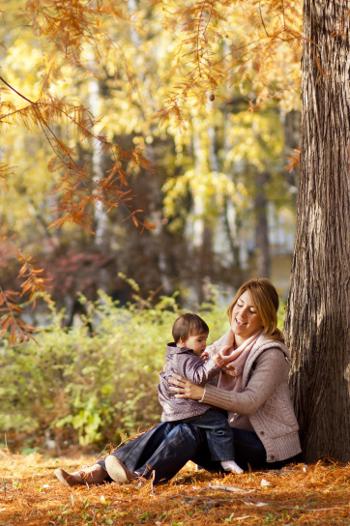Where did all the green go?
Duration/age

Autumn has finally arrived and the days and nights are cooler. With the arrival of autumn you will not only notice changes to the weather but also the time the sun rises and sets.
Autumn is a time when many changes take place in the garden. Take a walk around the garden or the neighbourhood and try to see what has changed or is different. Have the leaves on the trees started to change colours, going from green to yellows and reds? Have leaves started to fall from the trees?
Talk to your child about what you or your neighbours have planted in the garden. Some plants and trees don’t change in autumn and stay green all year round. These are the deciduous trees. Some trees will not lose their leaves and will have fruit.
Explain to your child that citrus trees have autumn and winter fruit.
The fruit on the tree changes. They start out small, green and hard. Then they turn plump, ripe and bright shades of yellow and orange.
When the weather changes from warm to cool it is a time for gardeners to pull out the summer vegetables and prepare the garden beds for what might be planted in the coming weeks. Explain to your child how gardeners know that it is time to pull out the summer plantings. Walk around your neighbourhood and show them how these plants have changed.
Look at this plant. The leaves have shrivelled up and it doesn’t have any flowers. Summer is ending and autumn is beginning.
Skills this activity improves
Why does this matter?
Walking through the garden and noticing changes as they occur helps children develop observation skills. When children are able to notice differences and changes they are able to use this information to sort and group. Sorting and grouping is the beginning of classification.
As children refine their observation skills they begin to notice small differences between objects. Noticing small differences is important for reading and writing. When children don’t notice small differences they are not able to distinguish between:
- c and o
- m and n
- p and q
Talking about the changes in the garden and the different seasons helps children to develop a rich vocabulary. Having a rich and expanded vocabulary helps children to develop reading skills and to talk with a broader group of people.
What does this lead to?
The development of a rich vocabulary and keen observational skills helps children to become confident readers.
When they are able to quickly see the differences in letters they do not need to stop and work out each letter, but will begin to read the word as a whole. Once they can do this or recognise and remember the word on sight, they will improve the speed and accuracy of their reading. This helps them to gain meaning from the whole sentence.
As you walk around the garden you will be looking at the trees and the leaves and then classifying them into different groups - such as deciduous, citrus, fruit tree, and flowering. Learning how to sort, group and classify helps children to problem-solve and understand how to interact with the object.
Language to use
- Branch, trunk, leaf, leaves, fruit, flower
- Deciduous, citrus, perennial, annual, evergreen, seasonal
- Autumn, summer, winter, spring
- On, off, ground, fall, lose
- Red, green, yellow, brown
Questions to use
- Which trees are losing their leaves?
- Will the fruit change colour?
- What happens to the leaves?
- Will the leaves grow back?
- How do we know when to pick the fruit?
- Is the weather different?
Useful tips
- You might also like to take a look at the activities Planting a garden you can eat and Seasons.
- Remember to talk to your child in your home language.
More ideas
- Mark the different seasons on a calendar.
- Google different things you can plant for autumn.
- Make a weather chart, plotting the different weather patterns.
Variation by age
Three to five year olds
- Take photos of the changing garden and create your own autumn storybook.
- Look in the paper each day for the sunrise and sunset time.
- Plant the autumn and winter veggies.
- Create paintings and drawings of the changes in the garden.
- Make a citrus fruit salad.
Questions to ask
- Do all plants lose their leaves?
- Are the days longer or shorter?
- Do we need to wear different clothes?
- Can you eat the skin on the citrus fruit?
Language to use
- Light and dark shades
- Cool colours, warm colours, tones
- Branch, trunk, leaf, leaves, fruit, flower
- Deciduous, citrus, perennial, annual, evergreen, seasonal
- Autumn, summer, winter, spring
- On, off, ground, fall, lose


